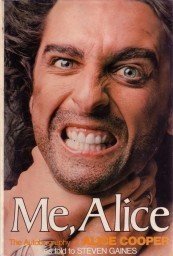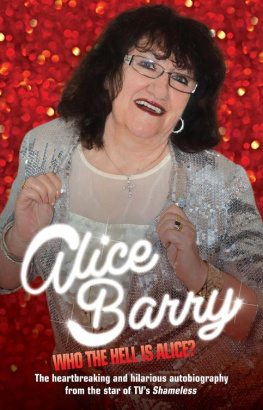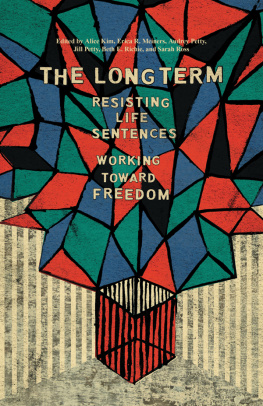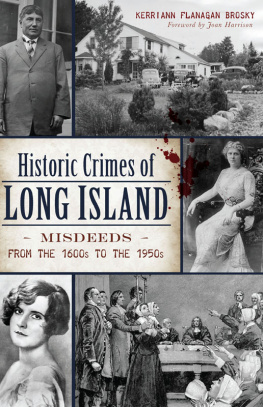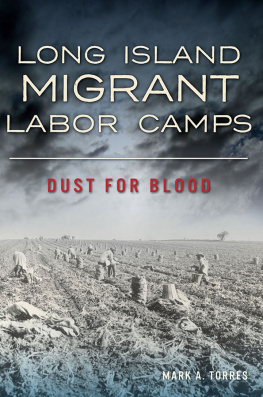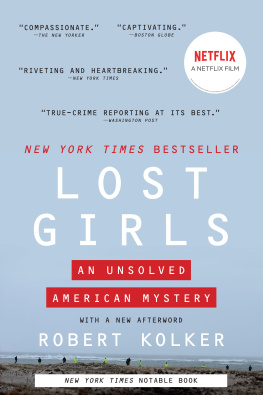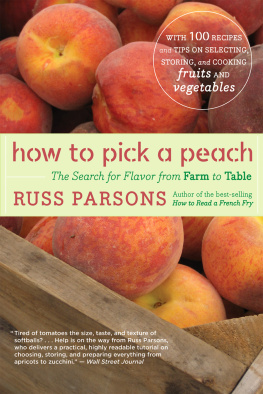
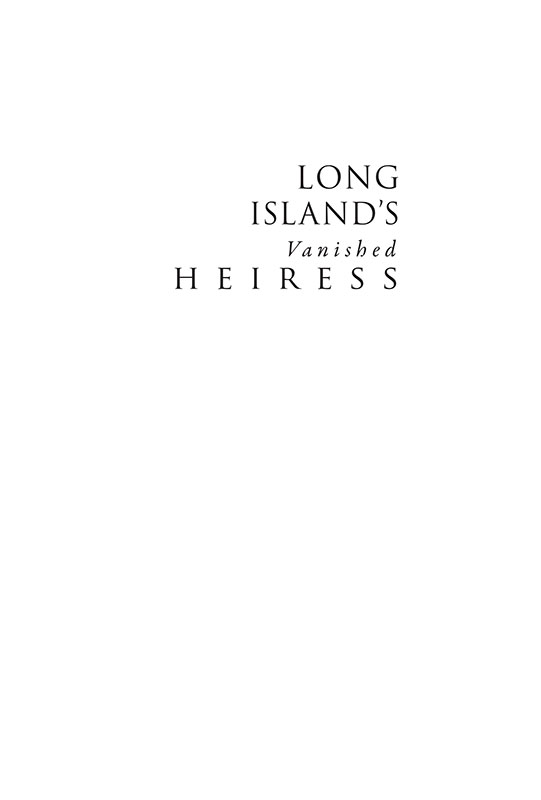

Published by The History Press
Charleston, SC
www.historypress.com
Copyright 2020 by Steven C. Drielak
All rights reserved
First published 2020
E-book edition 2020
ISBN 978.1.43967.033.0
Library of Congress Control Number: 2020932079
print edition ISBN 978.1.46714.679.1
Notice: The information in this book is true and complete to the best of our knowledge. It is offered without guarantee on the part of the author or The History Press. The author and The History Press disclaim all liability in connection with the use of this book.
All rights reserved. No part of this book may be reproduced or transmitted in any form whatsoever without prior written permission from the publisher except in the case of brief quotations embodied in critical articles and reviews.
There are only three possible theories in this case:
The Kidnap Theory;
The Voluntary Disappearance Theory;
The Murder Theory
Inspector Earl J. Connelley, FBI
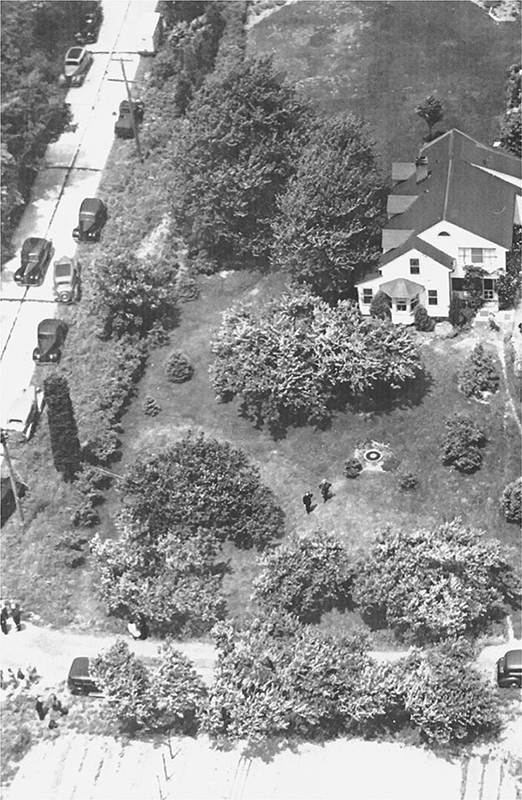

CONTENTS
.
PREFACE
The 1930s were a tumultuous time in our nations history. As the country emerged from the Prohibition era, Americans found themselves facing a new kind of criminal and a new kind of crime. As the 1930s began, the country was captivated by the misdeeds of headline-grabbing criminals like John Dillinger, Baby Face Nelson, Pretty Boy Floyd, Machine Gun Kelly, Ma Barker and Bonnie and Clyde. In addition to breeding a whole new generation of notorious killers, the 1930s also bred a new type of crime: the kidnapping. Abduction for ransom became one of the big-money crimes, along with prostitution, alcohol and drug trafficking. From 1930 to 1932 more than two thousand individuals were abducted for ransom in this country. These events were capped by the kidnapping and murder of twenty-month-old Charles Lindbergh Jr. from his home in East Amwell, New Jersey, in 1932.
Our nations response to these heinous crimes was twofold. First, Congress passed new legislation in the form of the Lindbergh Law, which made kidnapping a federal crime if the victim was taken across state lines. The law also allowed for federal jurisdiction whenever a ransom note was placed into the U.S. mail system. Secondly, the U.S. government began to consolidate its federal investigative resources into one large and highly effective organization. That consolidation led to the 1935 creation of the Federal Bureau of Investigation (FBI), which would be led by John Edgar Hoover for the next thirty-seven years.
The story of the alleged kidnapping that took place on the morning of June 9, 1937, at the Long Meadow Farm on Long Island has, until now, been told only by its three main witnesses. These witnesses told a story that caught the attention of an entire nation and led to one of the most expansive investigations in the FBIs then-short history. The news of the kidnapping of heiress Alice McDonell Parsons from her twenty-two-acre farm was splashed across the front page of every major newspaper in the country. This criminal act would eventually pit the mind of one of the FBIs most talented and experienced inspectors against the mind of a simple Russian housekeeper. In the end, only one would win this battle of wills, and in the end, one did.
ACKNOWLEDGEMENTS
My special thanks to the Three Village Historical Societys archivist Karen Martin for all of her encouragement and assistance.
THE KIDNAPPING
JUNE 9, 1937
At 6:30 a.m. on the morning of June 9, 1937, the four occupants of a modest farmhouse located in Stony Brook, New York, began their day. William H. Parsons Jr., the owner of Long Meadow Farm, started his morning by putting his trousers on over his pajamas and a sweater over his shirt before leaving the house to feed the pigeons and other poultry livestock on his twenty-two-acre farm. On his walk back to the house, he stopped into the farms detached garage, which housed the family car. The car was a new tan-colored Dodge sedan with chromium trim that he had purchased just three months before from the Newcomb Brothers in the nearby village of Port Jefferson. He slipped into the drivers seat, turned over the engine and pulled the car up to the rear of the house. Going back into the house, he proceeded directly to his upstairs bedroom and changed into business attire for his upcoming journey into New York City. Once dressed, William joined his wife, Alice; their Russian housekeeper, Anna Kupryanova; and the housekeepers ten-year-old son, Roy, at the breakfast table.
There was nothing special about that mornings breakfast table conversation. William and Alice spoke about the maintenance that needed to be done on a piece of property known as the Sammis place, which Alice had recently inherited from her uncle Colonel Timothy Williams. The property was part of a large estate called Shoreland in the town of Huntington. They also talked about a house painter by the name of Frederick Hubbs whom they were considering hiring to paint the kitchen and butlers pantry at the Sammis place. Alice reminded William that she would be traveling to Huntington that day and would leave a note for Hubbs in his mailbox regarding the color scheme requested by the new tenant of the Sammis place.
The property was about to be rented to Ruth Burdin. The agreement to rent the property to her had just been reached, and the only people aware of the agreement were Burdin, William and Alice.
At the conclusion of breakfast and out of the earshot of young Roy, William and Alice had a discussion regarding the purchases William was to make while he was in New York City that day. One of these purchases included a quiver of arrows for Roys upcoming eleventh birthday, which was just three days away.
The vast majority of William Parsonss days were spent working on the farm. This business trip to New York City had been hastily arranged the day before and was known only to him, Alice, Anna and those he was to meet in New York City.
At the time, the Parsonses and their housekeeper ran a small business from Long Meadow Farm. They raised squabs and sold canned squab and squab paste to various high-end grocers throughout the area. The original recipe for the squab paste had been provided by housekeeper Anna, which made her a key operator within the small family business. Unfortunately, they had seen little profit from this business venture and considered dropping the enterprise.
In the fall of 1936, the three of them jointly settled on one final effort to increase sales. They had thought at first to arrange with Macys department store in New York City to make a display of their canned squab but abandoned the idea due to the low market price for squab at that time. They felt that there was more of a market for the squab paste than there was for the canned squabs. With this in mind, Anna Kupryanova took the next step to increase profitability when she wrote to her longtime friend and Russian contact Kyra Malkovsky to arrange the meeting in New York City that day between William Parsons and Baron George Tuve of the Macoroff Company. The Macoroff Company was a major distributor of Russian caviar. Anna and the Parsonses believed that the Macaroff Company could advise them on how to best make their squab paste business profitable.
Next page

